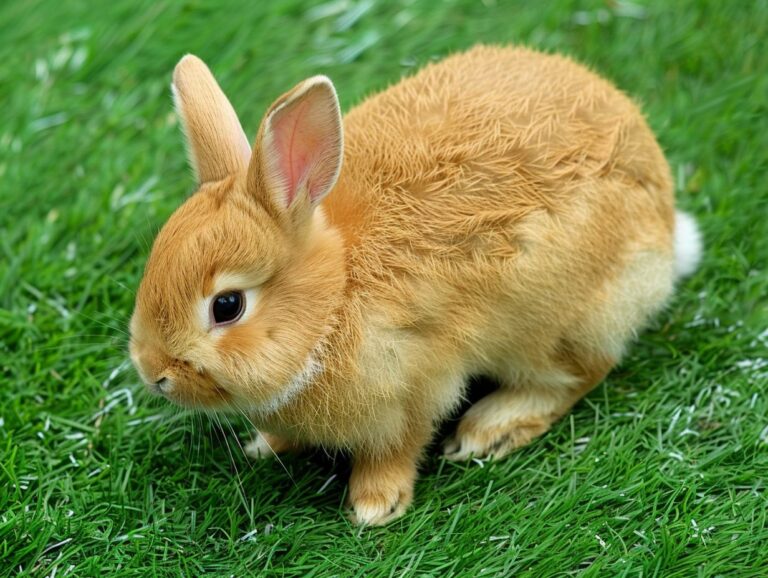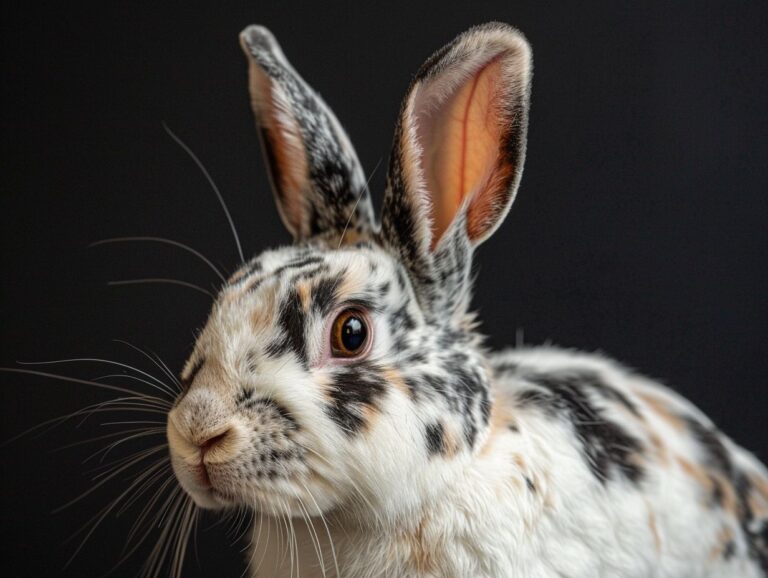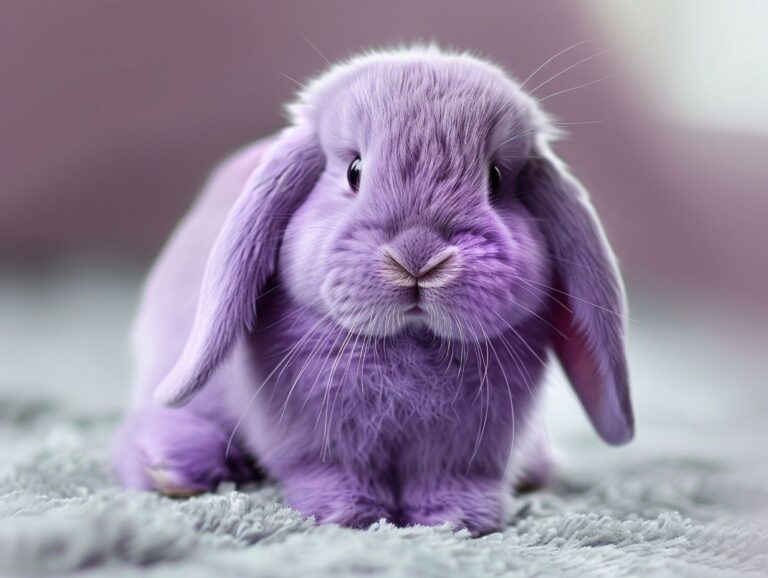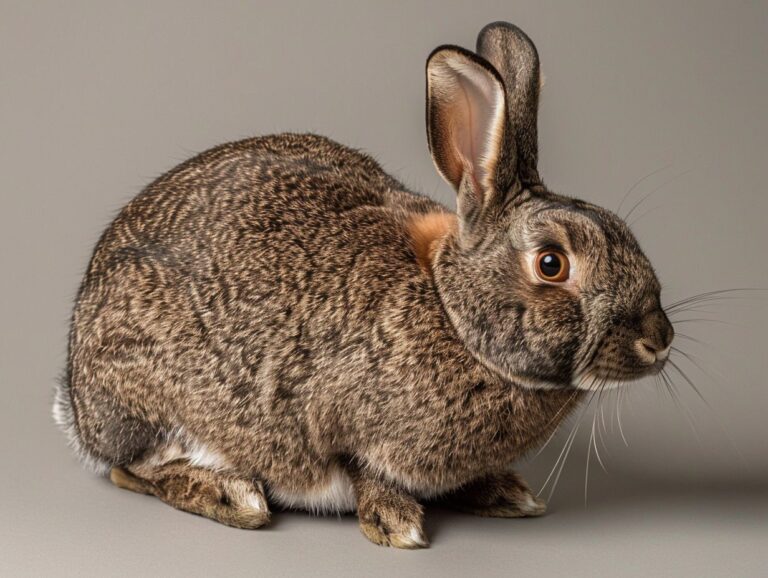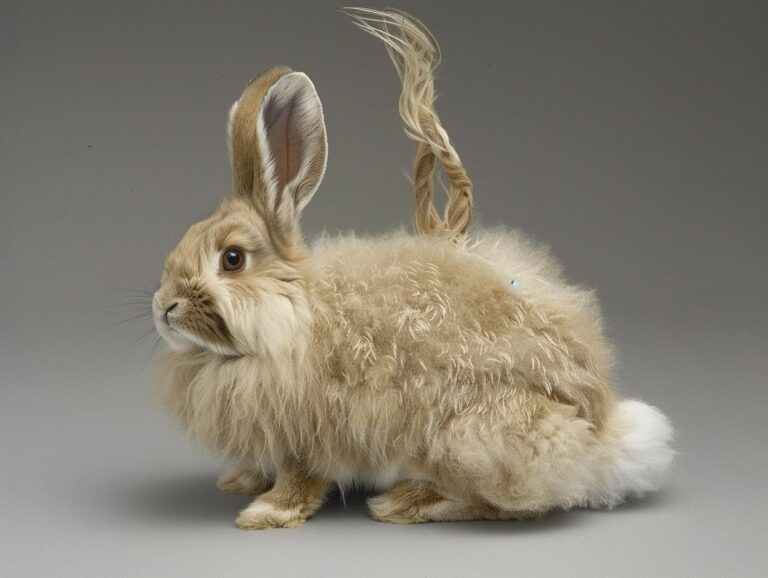Alaskan Rabbit Breed: Characteristics, Care, History, and Breeding Practices
Are you curious about the Alaskan rabbit breed? In this comprehensive article, we will explore the unique characteristics, care requirements, history, and breeding practices associated with these fascinating rabbits. From their size and appearance to their temperament and behavior, we will delve into all aspects of caring for Alaskan rabbits. Join us as we uncover the origins of this breed, its popularity and decline, and the efforts being made to conserve its legacy. Plus, learn about the breeding practices involved in selecting, mating, and caring for these special rabbits.
Key Takeaways:
What Is the Alaskan Rabbit Breed?
The Alaskan Rabbit breed is a fascinating rabbit type originating from Germany and recognized by both the British Rabbit Council and the American Rabbit Breeders Association.
The Alaskan Rabbits have a unique history that dates back to the early 20th century when they were developed by breeders in Germany. Initially bred for their distinctive coloration and fluffy fur, these rabbits quickly gained popularity for their striking appearance and engaging personalities.
It was not long before the breed’s outstanding qualities caught the attention of major rabbit breeding associations, leading to their official recognition by the British Rabbit Council and the American Rabbit Breeders Association. The breed standard set by these esteemed organizations outlines the specific characteristics that define an exemplary Alaskan Rabbit, ensuring breeders maintain the breed’s integrity and quality.
What Are the Characteristics of Alaskan Rabbits?
Alaskan Rabbits are medium-sized rabbits known for their gloss black coat and friendly temperament, making them popular among rabbit enthusiasts.
These rabbits typically weigh between 5 to 8 pounds and have a distinctive sleek appearance. Their black coat is often shiny and lustrous, adding to their elegant charm. Despite their dark color, Alaskan Rabbits have a sweet and gentle demeanor, making them wonderful companions for both children and adults. They are known for being docile and sociable, often enjoying human interaction and bonding with their owners. This affable nature has endeared them to many households, where they thrive in loving environments.
Size and Appearance
Alaskan Rabbits are medium-sized rabbits with a striking gloss black coat that sets them apart from other breeds.
These rabbits typically weigh between 6 to 12 pounds and have a compact, solid build that gives them a robust appearance. Their glossy black fur shines under the sunlight, accentuating their sleek and elegant look. The coat is dense and soft to the touch, making Alaskan Rabbits not only visually stunning but also pleasant to pet. Their ears are upright and well-proportioned to their body size, adding to their overall charm and distinctive appeal.
Coat and Color
The coat of Alaskan Rabbits is predominantly black, adding to their unique and attractive appearance favored by many rabbit breeders.
Black fur in Alaskan Rabbits is not just aesthetically pleasing but also valuable for breeders as it sets them apart from other rabbit breeds. This distinct coloration plays a crucial role in maintaining the purity of the breed, as it helps breeders easily identify Alaskan Rabbits in a mix of different rabbit varieties.
Temperament and Behavior
Alaskan Rabbits are known for their friendly and docile temperament, making them suitable as pets for families and individuals.
They are often described as gentle and sociable creatures, forming strong bonds with their human companions. Their calm demeanor and affectionate nature make them a popular choice among rabbit enthusiasts.
Alaskan Rabbits are known to be responsive to human interaction, thriving on attention and companionship. They enjoy being petted and cuddled, showing a remarkable level of trust towards their owners. Check out more about the Polish rabbit breed.
These rabbits exhibit playful behavior, hopping around in a joyful manner, especially when they are content and well-cared for. Their curious nature often leads them to explore their surroundings, making them engaging and entertaining pets.
How to Care for Alaskan Rabbits?
Caring for Alaskan Rabbits involves providing a balanced diet, suitable habitat, regular grooming, and proper health care to ensure their well-being and longevity.
In terms of their diet, Alaskan Rabbits require a mix of hay, fresh vegetables, and commercial rabbit pellets to meet their nutritional needs. Fresh water should always be available. For their habitat, provide a large enclosure with space to hop around and hide. Proper bedding, like hay or straw, is essential for their comfort. Grooming is crucial to prevent matting and fur ingestion; brush them regularly and trim their nails when needed.
Housing and Environment
Creating a comfortable and safe habitat for Alaskan Rabbits is essential for their overall well-being and happiness, ensuring they have adequate space and shelter.
Alaskan Rabbits are particularly sensitive to extreme weather conditions, so providing proper insulation and ventilation in their housing is crucial.
Incorporating Rhinelander rabbit breed such as tunnels, platforms, and toys in their habitat can stimulate their natural behaviors and prevent boredom and stress.
Ensuring a suitable environment also involves regular cleaning to maintain hygiene and prevent respiratory issues, which are common in rabbits living in unsanitary conditions.
Diet and Nutrition
Providing a balanced diet rich in nutrients is crucial for the health and vitality of Alaskan Rabbits, ensuring they receive the necessary vitamins and minerals for optimal growth and development.
Alaskan Rabbits, like all rabbits, have specific dietary requirements that must be met to keep them healthy. They need a diet high in fiber, which can be obtained from grasses, hay, and leafy greens. They require a good source of protein from pellets or fresh greens like kale and spinach. Ensuring a well-rounded diet is essential for their well-being. Carrots and other vegetables can be given in moderation, as they provide essential nutrients. It’s important to avoid feeding them foods high in sugar and fats as this can lead to health issues. Fresh water must always be available to keep them hydrated.
Grooming and Hygiene
Regular grooming practices such as brushing their fur and trimming nails are essential for maintaining the health and hygiene of Alaskan Rabbits, preventing matting and ensuring their comfort.
Aside from brushing and nail trimming, it is crucial to inspect the rabbit’s ears, eyes, and teeth regularly to detect any signs of infections or issues early. Utilizing a rabbit-friendly grooming brush will help remove loose fur, reduce shedding, and stimulate blood flow, promoting a healthy coat.
Furthermore, maintaining a clean living environment for your Alaskan Rabbit is vital to prevent infestations and skin problems. Regularly cleaning their bedding and litter box, and providing fresh hay and water daily, helps in maintaining overall hygiene.
What Is the History of the Alaskan Rabbit Breed?
The history of the Alaskan Rabbit breed traces back to European breeders who developed these rabbits before their introduction to North America, where they gained recognition from the British Rabbit Council.
European breeders played a crucial role in crafting the distinctive characteristics of the Alaskan Rabbit breed, combining various breeds to achieve the desired traits. These rabbits were specifically bred for their fur quality and size, making them valuable in the fur trade industry. Upon reaching North America, the Alaskan Rabbits found favor among breeders and enthusiasts for their unique appearance and gentle temperament. Their popularity grew steadily, leading to their eventual acknowledgement by the British Rabbit Council as an official breed.
Origin and Development
The Alaskan Rabbit breed originated in Germany and underwent further development by European breeders who refined its physical characteristics and temperament before its introduction to North America.
The Alaskan Rabbit breed was initially bred for its unique fur qualities which made it a valuable commodity in the fur trade. European breeders played a significant role in shaping the breed by focusing on enhancing both its coat color variations and its overall size, creating a distinct breed that stood out among others. This intentional breeding process led to the establishment of breed standards that emphasized specific traits like ear length, body shape, and fur density, all aimed at producing the ideal Alaskan Rabbit. Through careful selection and crossbreeding, the breed gradually evolved into the recognizable and sought-after rabbit we know today.
Popularity and Decline
The Alaskan Rabbit breed enjoyed a period of popularity among rabbit enthusiasts before experiencing a decline in numbers, raising concerns about its conservation and preservation.
Historically, the Alaskan Rabbit breed captured the attention of breeders worldwide with its distinctive features, including its dense fur and striking color variations. As industrial farming practices and preferences shifted towards other rabbit breeds, the Alaskan Rabbit faced a decrease in demand and breeding efforts. This decline in numbers led to the breed being listed as endangered, prompting conservationists and rabbit breeders to rally together to protect and revive this unique breed.
Current Status and Conservation Efforts
The current status of the Alaskan Rabbit breed involves dedicated conservation efforts by breeders and organizations to safeguard its genetic diversity and ensure its continued existence for future generations.
Recognizing the significance of preserving the unique qualities of the Alaskan Rabbit, conservation initiatives have been established to protect the breed from potential threats such as habitat loss and genetic dilution. Through the implementation of breeding programs that emphasize New Zealand rabbit breed practices and healthy bloodlines, experts aim to fortify the resilience of the Alaskan Rabbit population.
Collaborative partnerships between conservationists, wildlife experts, and academic researchers play a pivotal role in gathering valuable data on the breed’s population dynamics and genetic makeup. By leveraging scientific advancements and innovative technologies, these stakeholders work together to develop sustainable conservation strategies that will ensure the long-term viability of the Alaskan Rabbit breed.
What Are the Breeding Practices for Alaskan Rabbits?
Breeding Alaskan Rabbits involves selecting breeding stock carefully, managing mating and pregnancy, caring for newborns, and preparing rabbits for sale or show competitions.
One crucial aspect of breeding Alaskan Rabbits is the selection of breeding stock. It is important to choose rabbits that exhibit desirable traits such as good health, temperament, and conformity to breed standards.
In terms of managing mating and pregnancy, breeders need to be attentive to the timing of mating to maximize the chances of a successful pregnancy. Monitoring the doe’s diet and health during this period is also essential for the well-being of both the mother and the litter. For more information on the Angora rabbit breed, including characteristics, care, history, and breeding practices, visit the link.
Proper care for newborn rabbits is vital to ensure their survival and optimal development. This includes creating a safe and warm nesting environment, providing adequate nutrition, and closely monitoring the young kits for any signs of distress. Learn more about the Florida white rabbit breed and its characteristics.
For breeders looking to sell or showcase their rabbits, it is important to consider factors such as breed standards, grooming practices, and training for showmanship. Building a reputation in the rabbit breeding community can greatly enhance the marketability of your rabbits.
Selecting Breeding Stock
Selecting high-quality breeding stock is a crucial step in maintaining and improving the Alaskan Rabbit breed’s desirable traits and characteristics for future generations.
When choosing breeding stock for Alaskan Rabbits, it is essential to consider various factors that contribute to the breed’s standards and genetic diversity.
- Physical attributes such as fur color, body shape, ear length, and eye color play a significant role in upholding the Himalayan rabbit breed‘s distinct appearance.
- Additionally, temperament is another crucial aspect to consider as it affects the overall behavior and adaptability of the tan rabbit breed.
- Genetic diversity is also key in preventing inbreeding and maintaining a healthy population of Alaskan Rabbits.
Mating and Pregnancy
Managing mating and pregnancy in Alaskan Rabbits requires careful supervision and monitoring to ensure the health and well-being of both the mother and offspring.
During mating season, it is crucial to observe the rabbits closely for any signs of aggression or stress. A calm and stress-free environment can greatly improve the breeding success rate. Once mating has occurred, regular monitoring of the pregnant doe is vital. This includes tracking her weight, providing a proper diet rich in essential nutrients, and ensuring she has a comfortable nesting area.
As the pregnancy progresses, it is important to consult with a veterinarian experienced in breeding practices to address any potential health issues and prepare for the birthing process. Monitoring the doe’s behavior and physical condition helps in anticipating complications and taking necessary precautions.
Caring for Newborns
Providing proper care for newborn Alaskan Rabbits includes ensuring warmth, nutrition, and hygiene to support their growth and development during the critical early stages of life.
Keeping newborn Alaskan Rabbits in a warm, draft-free environment is crucial, as they are particularly vulnerable to temperature fluctuations. Utilize a heat lamp or heating pad to maintain a constant temperature around their nesting area.
- In terms of nutrition, a mother rabbit’s milk provides essential nutrients for their growth, so ensure that the mother is well-fed and hydrated.
- Good hygiene practices include regularly cleaning the nesting area to prevent the buildup of waste and bacteria that could harm the newborns.
By observing these care practices diligently, you can help ensure the health and well-being of your newborn Alaskan Rabbits.
Selling and Showing Rabbits
Selling and showing Alaskan Rabbits involves preparing them for exhibitions and competitions, showcasing their unique traits and conforming to breed standards set by rabbit breeding associations.
One crucial aspect of preparing Alaskan Rabbits for exhibitions is grooming them meticulously to highlight their distinct fur qualities and colors, ensuring they are in top condition to impress judges and spectators. Attention to detail in terms of their diet and health is essential to maintain their vitality and vibrancy. This meticulous care reflects the dedication of breeders to preserve the breed’s characteristics and appeal to enthusiasts seeking high-quality rabbits.
Frequently Asked Questions
What is the Alaskan Rabbit Breed?
The Alaskan Rabbit Breed is a domestic rabbit breed that was developed in Alaska in the 1960s. It is a cross between the Belgian Hare, Chinchilla, and New Zealand White rabbit breeds.
What are the characteristics of the Alaskan Rabbit Breed?
The Alaskan Rabbit Breed is known for its large size, weighing between 10-15 pounds. It has a short, dense coat in a variety of colors including white, black, blue, and chocolate. The breed is also known for its distinctive “ear tufts” and upright ears.
How should I care for an Alaskan Rabbit Breed?
Like all rabbits, the Alaskan Rabbit Breed requires a clean and spacious living environment with access to fresh water and a balanced diet of hay, pellets, and fresh vegetables. They also need regular grooming to maintain their coat and prevent hairballs.
What is the history of the Alaskan Rabbit Breed?
The Alaskan Rabbit Breed was originally developed in the 1960s by Alaskan breeder George Brown. He aimed to create a rabbit breed that could thrive in Alaska’s harsh climate and be used for both meat and fur production. The breed was officially recognized by the American Rabbit Breeders Association in 1993.
Can I breed Alaskan Rabbit Breeds?
Yes, Alaskan Rabbit Breeds can be bred for both personal and commercial purposes. However, it is important to research and understand the proper breeding practices and guidelines, as well as the responsibilities of caring for and finding homes for the offspring.
Are there any health concerns specific to the Alaskan Rabbit Breed?
No, the Alaskan Rabbit Breed is generally a healthy and hardy breed. However, like all rabbits, they are susceptible to certain health issues such as dental problems and gastrointestinal stasis. Regular visits to a veterinarian and proper care can help prevent and address these issues.

